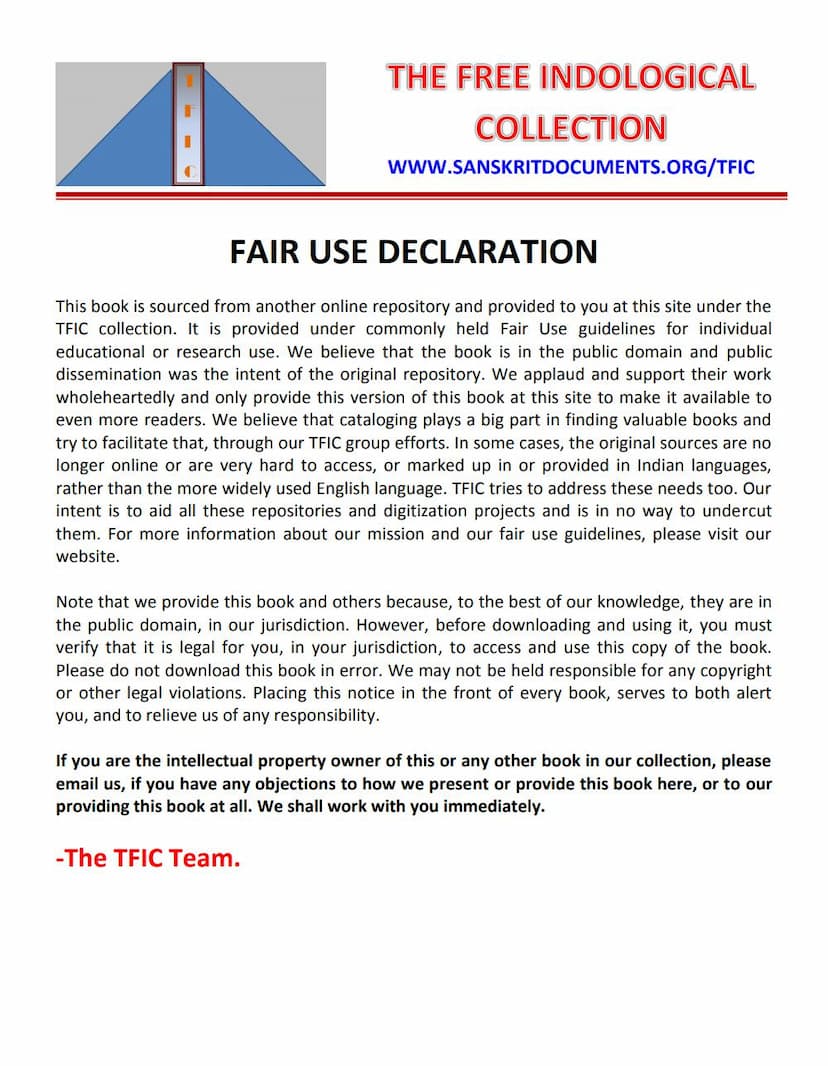Jain Siddhant Pravesh Ratnamala 01
Added to library: September 2, 2025

Summary
The provided text is the first volume of "Jain Siddhant Pravesh Ratnamala" (A Garland of Jewels for Entry into Jain Principles), authored by the Digambar Jain Mumukshu Mandal, Dehradun. This book aims to provide a foundational understanding of Jain philosophy through a question-and-answer format, drawing heavily on the teachings of Acharya Kundakunda and prominently featuring the spiritual insights of Shri Kanji Swami.
The preface highlights the goal of helping souls escape worldly suffering and attain happiness, stating that the true path lies in recognizing one's pure self, which is Samyagdarshan (right faith). The book is presented as a tool for those with limited intellect to understand Jain principles, which are considered essential for spiritual progress. It covers key concepts like substance (dravya), attributes (guna), and modes (paryaya), along with six general attributes and four types of non-existence (abhav).
The text then delves into specific Jain doctrines through a series of questions and answers:
Key Concepts and Teachings:
- Self-Identity (Who are you?): The essence of the self (soul) is identified as an entity with infinite qualities like knowledge, perception, and conduct. It is distinct from the body, senses, mind, speech, and karmic influences.
- The Nature of Suffering: Suffering arises from forgetting one's true nature and becoming attached to external or illusory states (moha-induced intoxication).
- Mithyattva (False Belief): Mithyattva is considered a graver sin than the seven deadly sins. It is the root of the cycle of birth and death (samsara) and is divided into two types:
- Agr̥hīta Mithyadarshan: The innate, beginningless false belief that has persisted over time.
- Gr̥hīta Mithyadarshan: False beliefs adopted from wrong beliefs, wrong teachers, or wrong paths.
- The Six Substances (Dravya): The universe is composed of six fundamental substances:
- Jiva (Soul): Infinite in number, possessing consciousness.
- Pudgala (Matter): Infinitely more numerous than souls, comprising atoms and their combinations (skandhas). It has qualities like touch, taste, smell, and color.
- Dharma (Medium of Motion): One substance, pervading the universe, enabling motion.
- Adharma (Medium of Rest): One substance, pervading the universe, enabling rest.
- Akasha (Space): One substance, pervading both the inhabited (loka) and uninhabited (aloka) regions, providing space.
- Kala (Time): Innumerable in number, existing in each point of space, responsible for change and transformation.
- The Six General Attributes (Samanya Guna): These are attributes common to all substances:
- Astitva (Existence): The inherent reality of a substance, never ceasing to exist or being created.
- Vastutva (Thingness/Objectivity): The capability of a substance to perform its specific function.
- Dravyatva (Substantiability): The inherent nature of a substance to undergo constant change in its modes while remaining its substance.
- Pramyatva (Knowability): The property of being knowable by consciousness.
- Agurulaghutva (Incorporeality/Immutability): The attribute that prevents a substance from diminishing in essence, becoming larger, or merging with others.
- Pradeshatva (Spatiality): The attribute of occupying space with its constituent parts or the entire substance.
- The Four Non-Existences (Abhav):
- Pragabhav: The absence of a substance in its previous state before its manifestation.
- Pdhvansabhav: The absence of a substance in its future state after its destruction.
- Anyonyabhav: The mutual absence of one substance in another (e.g., soul in matter).
- Atyantabhav: The absolute absence of one substance in another, existing at all times.
- Cause and Effect: The book emphasizes that each substance acts independently according to its own nature. External factors are merely instrumental (nimitta), not the ultimate cause (upadan) of change. For instance, the soul is the ultimate cause of its actions and experiences, not karma, body, or external influences.
- The Soul's True Nature: The soul is described as unchanging, eternal, and inherently blissful, possessing infinite knowledge and perception. The path to liberation (moksha) lies in realizing this inherent nature and shedding false beliefs and attachments.
- The Role of External Practices: While external practices like devotion, rituals, and austerities are mentioned, they are considered only preparatory or supportive steps. The ultimate goal is the realization of the self's intrinsic nature.
- Distinction between Substance and Mode: A clear distinction is drawn between the permanent substance (dravya) and its changing modes (paryaya). The soul's essence remains pure and unchanged, even when experiencing various karmic modes.
Overall Theme:
The central message of "Jain Siddhant Pravesh Ratnamala, Volume 1" is the pursuit of self-realization through Samyagdarshan (right faith), Samyagnyan (right knowledge), and Samyagcharitra (right conduct), all of which stem from understanding the true nature of the self and the reality of the universe as described in Jain philosophy. The book aims to provide clarity on fundamental principles to guide individuals towards spiritual liberation.